Related Research Articles
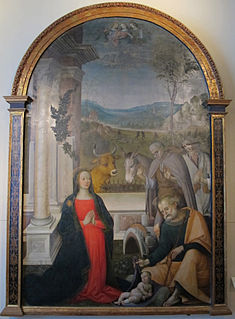
Giacomo Pacchiarotti or Jacopo Pacchiarotto was an Italian painter.
Giulio Cesare Amidano was an Italian painter of the late-Renaissance style. He was also known as Pomponio Amidano, in part because he is either confused with or was a pupil of Pomponio Allegri; others claim he was a pupil of Francesco Mazzola (Parmigianino). Much of his biography is poorly documented. He is said to have been born in Parma and to have died there from the plague.
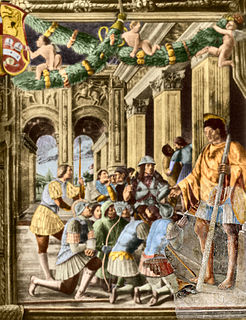
Ansuino da Forlì was an Italian painter of the Quattrocento period. Born and active in Forlì and Padua in the mid-15th century, he was a member of a Forlì painting school and influenced the great Melozzo da Forlì.

Alessandro Araldi was an Italian painter of the Renaissance, active mainly in Parma.

Cesare Aretusi was an Italian painter of the late-Renaissance period.

Vittorio Bigari was an Italian painter of the late-Baroque period.
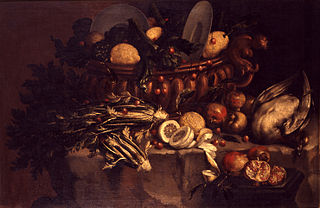
Felice Boselli was an Italian painter of the Baroque period, active mainly in Piacenza. He was not the pupil of Giuseppe Nuvolone, the son of Panfilo, as some have stated, but instead of Giuseppe's brother, Michelangelo Nuvolone. In that studio, he met the still-life painter Angelo Maria Crivelli also called il Crivellone, who became influential in his style. He is known for still-life paintings of live and dead game, including animals, birds, and fish.
Alfonso Rivarola was an Italian painter of the Baroque period, active mainly in Ferrara, where he was born. He is also known as il Chenda because of an inheritance he received from someone with that name.
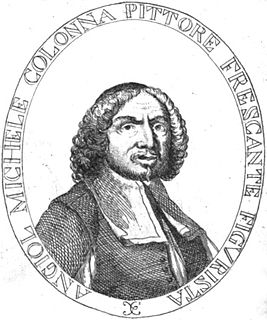
Angelo Michele Colonna was an Italian painter of the Baroque period, active in Bologna, northern and central Italy and Spain. He is sometimes referred to as Michelangelo Colonna.
Girolamo Curti (1575–1632) was an Italian painter of the early-Baroque, specializing in quadratura.
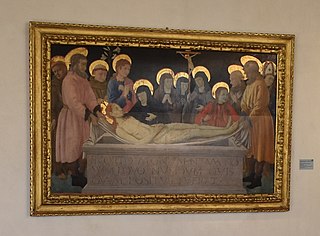
Galasso Galassi was an Italian painter of the early-Renaissance period, active mainly in Ferrara. He also worked for some years in Bologna. He was one of the earliest painters of the School of Ferrara.
Gervasio Gatti was an Italian painter during the late-Renaissance, active in Parma, Piacenza, and Cremona. He was also known as Il Soiaro Gatti trained with his uncle Bernardino Gatti. He helped decorate the salons in the Rocca of San Secondo Parmense. He also studied with Correggio.
Antonio Giusti (1624–1705) was an Italian painter of the Baroque period, active mainly in Florence. He was a pupil of the painters Cesare Dandini and Mario Balassi. Giusti was known for his landscape paintings, in the style of Salvatore Rosa. Among those who studied with Giusti, was Giovanni Camillo Sagrestani.

Agostino Mitelli was an Italian painter of the Baroque period and best known as a fresco painter of quadratura or illusionistic perspectival architectural frameworks.

Giovanni de' Vecchi was an Italian painter of the Renaissance period.

Fabrizio Santafede or Fabrizio Santaféde was an Italian painter known for his altarpieces. He painted in a late-Mannerist style and his style marks the transition from Mannerism to Baroque.

Antonio Barbalonga or Barbalunga, also called Antonio Alberti, was an Italian painter of the Baroque period.
Antonio del Rincón was a 15th-century Spanish painter and artist, a court painter to los Reyes Católicos, Ferdinand II of Aragon and Isabella I of Castile.
Ralph Nicholson Wornum (1812–1877) was a British artist, art historian and administrator. He was Keeper and Secretary of the National Gallery of London from 1855 until his death.
Simone Papa the Younger was a Neapolitan fresco painter from Italy. Considered one of the best mannerists of this time, he was a scholar of Giovanni Antonio Amato. He is remembered for retaining an agreeable simplicity, and for distinguishing himself by correctness of form. Some of his works are in the church of Monte Oliveto, and in the choir of Santa Maria La Nova.
References
- Freedberg, Sydney J. (1993). Pelican History of Art (ed.). Painting in Italy, 1500-1600. Penguin Books Ltd. p. 416.
- Farquhar, Maria (1855). Ralph Nicholson Wornum (ed.). Biographical catalogue of the principal Italian painters. London: Woodfall & Kinder. p. 68.
Wornum.